Our daughter went on a study abroad semester through the University of Denver last Fall and participated in the ProWorld Peru program in Cusco. This program allowed her to gain hands-on experience by participating in community service projects, while studying Spanish language, development, and Latin American area studies offered through the Centro Bartolome de Las Casas (CBB). She spent the semester living with a local Cusco family so we took the opportunity to visit her at the end of her semester abroad. We based ourselves out of Cusco for our trip to Peru last December. This gave us the opportunity to see where she had been living and explore the surrounding area.
Cusco is a city in southeastern Peru, near the Urubamba Valley of the Andes mountain range. It is the capital of the Cusco Region as well as the Cuzco Province. In 2013, the city had a population of 435,114. Its elevation is around 3,400 m (11,200 ft). Cusco was the site of the historic capital of the Inca Empire.
Here a few overview shots of the city from the hills above.
This shot gives a good overview of the Plaza de Armas.
In Inca times, the plaza, called Huacaypata or Aucaypata, was the heart of the capital. Today it’s the nerve center of the modern city. The main cathedral (Cathedral Basilica of the Assumption of the Virgin) and the Church of La Compañía both open directly onto the plaza. The Church of La Compañía is considered one of the best examples of colonial baroque style in the Americas.
A shot of the Cathedral Basilica of the Assumption of the Virgin.
A couple of more shots taken around the plaza.
There were many beautiful flowers in the center plaza.
A few shots of some of the narrow streets surrounding the center plaza.
Throughout our trip, we made several trips to San Pedro Market. This market is by Peruvians for Peruvians – it is not aimed at tourists. This is where many of the locals go to shop. The building itself is one block long and three blocks wide. Vendors are squeezed into every bit of space, and they sprawl out of the market onto the streets and sidewalks nearby. The market is colorful, vibrant, and packed. Our daughter took us to the market on our second day in Peru and it was a little overwhelming at first. On our next visits we were able to really take everything in. The market has everything including row after row of fresh produce, just squeezed juices, handmade scarves and wares, freshly cut meats, handcrafted cheeses and breads and brimming bowls of just made Peruvian soups.
A lot of the clothes are actually made by the women selling them right at the market…pretty amazing to see women (and men) at beautiful old sewing machines in action.
Near the back, less frequented corner of the San Pedro Market beware…it’s not for the squeamish. The wonderful thing about most other countries is that they truly appreciate and use every inch of the animal that has given its life to feed them. Here there were items such as full pig’s heads, cow snouts, ox testicles and intestines, and dried alpaca jerky.
Outside of the market, there were also people selling food and wares along some of the streets. Here a Peruvian woman is selling bread along the side of the street.
Our daughter introduced us to the Sweet granadilla or Grenadia fruit. An unusual texture, but it had a good flavor. The outer shell is hard and slippery, and has soft padding on the interior to protect the seeds. The seeds, which are hard and black, are surrounded by a gelatinous sphere of transparent pulp. The pulp is the edible part of the fruit and has a soft sweet taste.
Looking down on the city is the Blanco de Christo statue. Modeled after the statue of Christ in Rio de Janeiro, this statue was a gift to the city from Palestinians resettled in Cusco from 1925 to 1945.
The sun was going down as we were at Blanco de Christo. A shot looking across the mountains. In the left of the picture you can see some of the high snow-covered Andes in the clouds,
As we were walking down from Blanco de Christo it began to turn dark. We got some beautiful shots of the city.
Some shots of the Plaza de Armas at night.
Our daughter took us to see her school one day. What a beautiful view of the snow covered Andes from the patio of the school!
On our last day in Cusco, we toured the Qoricancha (Sun Temple). This was the central site of worship for the Incas. Like so many other testimonies of fantastic Inca architecture, it was severely devastated by the conquistadores, the Spanish conquerors, who built their Christian church, Santo Domingo, on top of the ruins. Yet most of the bottom part of the temple is fairly well preserved. The site is one of the best in Cuzco, containing both Catholic and Inca heritage. Looking at the outside from Avenida del Sol, you get a perfect view of the church standing on the temple and you see the differences of the Inca and the Spanish way of building.

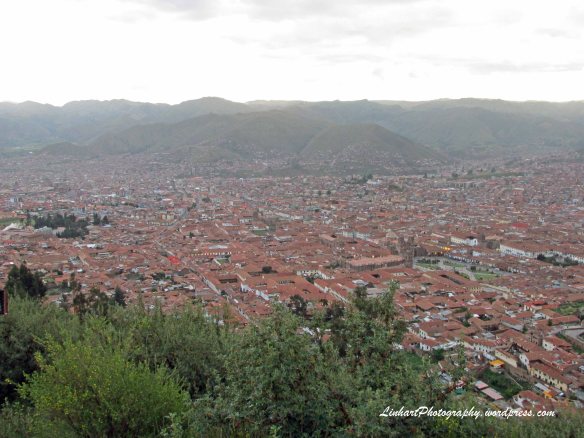






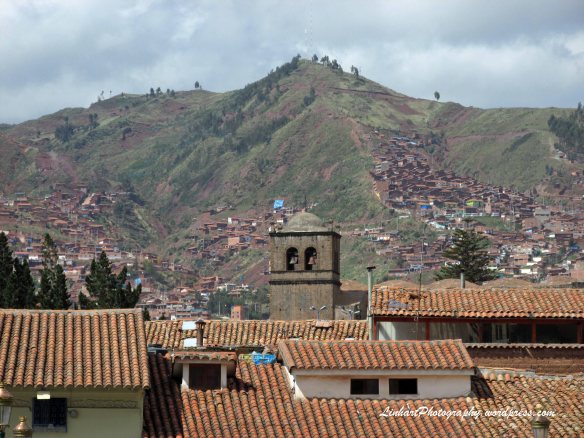















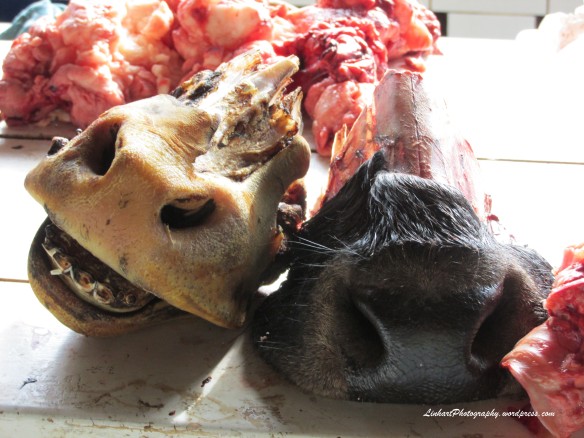



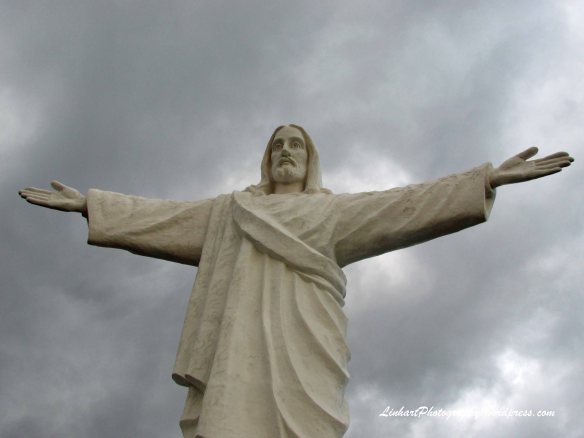





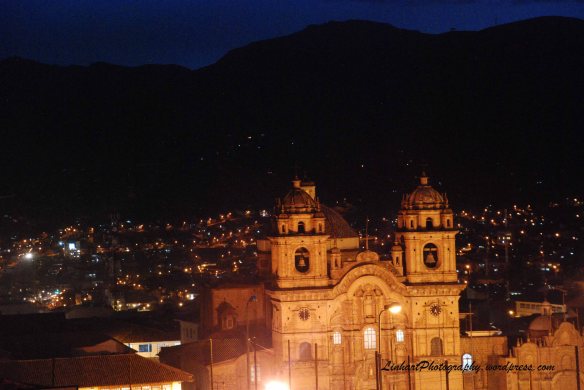









Great photos. Loved The Christ at night. A wonderful experience for your daughter and nice that you were able to visit at the same time.
Thanks Janet. We were very fortunate to be able to go and visit her!
Love the photos of the city from the hills above (and the pigs heads!) 🙂
Thanks Andy! The market was certainly quite fascinating and I loved the all of the city lights aglow on the hillsides at night.